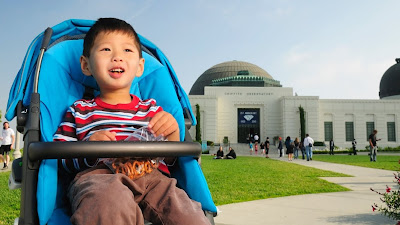Here are 12 alternatives for softish light when bouncing from ceilings and walls is not an option. Few are as good as bouncing but they may be better than nothing:
1. Handheld umbrella. I personally think this is the best alternative for family photographers. A handheld umbrella can provide soft directional light, with or without an assistant.
Example (with a ~40 inch softbrella):
Sometimes a normal sized umbrella is not practical. However, even a small umbrella is reasonably useful. I have a 19.5 inch umbrella, which is tiny compared to other umbrellas, but has a surface area of around 298.6 square inches, the same as the surface area of a 17.3 x 17.3 softbox. I also have a 25-inch umbrella (surface area of 490.9 square inches, the same as the surface area of a 22.16 x 22.16 softbox).
Example (19.5 inch reflective umbrella):

Example (25 inch shoot-through umbrella):

Related articles:
DIY handheld umbrella
Purpose-built handheld umbrella
2. Use a softbox or umbrella on a stand. Many pros use large umbrellas or softboxes such as the Lastolite EZybox
3. Bounce from a reflector. It is possible to bounce off a reflector, even without an assistant.
Example:

Related article: Bouncing Flash Outdoors in Daylight
4. Use a diffuser

5. Use a bracket with umbrella or softbox attachment. Here's a flash bracket that can be paired with a softbox


6. Bounce off random stuff. Sometimes it may seem as if there are no walls or ceilings to bounce from but there are actually usable bounce surfaces. Neil van Niekerk has used this technique successfully: http://www.planetneil.com/tangents/2008/11/14/workshop-views-miami-st-petersburg-fl/ (bouncing from random architectural features). Occasionally, I've bounced off other people's clothes (while making sure they're not looking :) ).
7. Bounce off your shirt (if it's white). If you're wearing a white or light colored shirt, you can try bouncing off your shirt. Because there's no directionality from this method, this is best suited for using flash as fill.
8. Bounce off the ground. Normally, upside-down light leads to a horror-movie look. However, if the shadows are not too dark, and the upside-down light is soft, then it may look ok. Sometimes, strong sunlight does bounce from the floor to illuminate a subject softly, and this technique can resemble that look.
Example:

Related article: Bouncing Light Off the Ground
9. Use a flash modifier that enlarges the surface area of your flash, such as the Lumiquest Softbox III
Related articles:
Do small modifiers offer any benefit?
Diffusion Doesn't Soften Light
Moving on to solutions that don't actually use soft light:
10. Use flash as fill. If the ambient light is bright, the flash can be used merely to lift shadows, which is less artificial-looking than direct on-camera flash as key. Some cameras are better at automatically throttling down the flash to do precisely that. In any case, use flash exposure compensation to make sure the flash isn't too bright. Using flash would still be an improvement over ambient-only by making shadow detail more visible, and reducing the highlight-shadow contrast.
Example:

Related article: Summer Pool Party
11. Use one or more hard light sources to control the highlight-shadow ratio.
Example 1 (one hard light source + ambient):

Example 2 (two hard light sources + ambient):

Related articles:
Three Dimensional Lighting
Quality vs. Contrast
12. Postprocessing. Sometimes, postprocessing can be used to simulate a softer light source.


No comments:
Post a Comment
Thanks for your comment. It will be published as soon as we get a chance to review it, sorry for that, but we get lots of spam with malicious links.